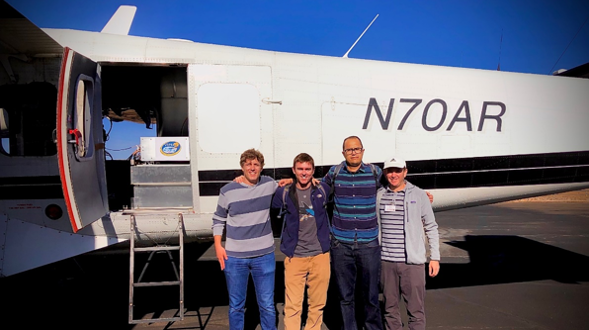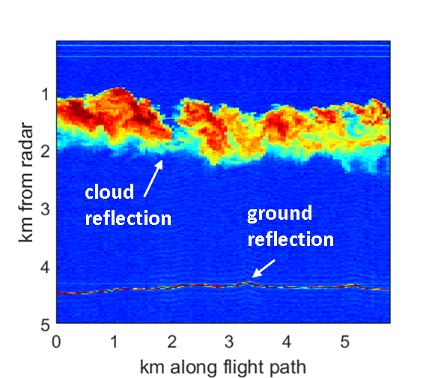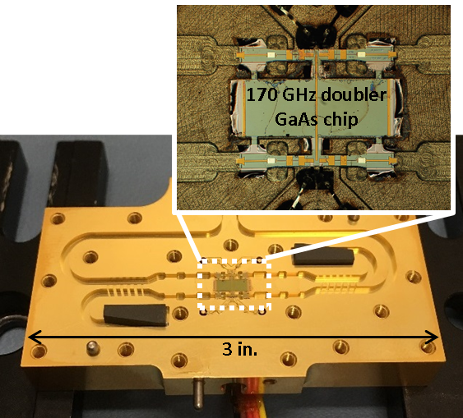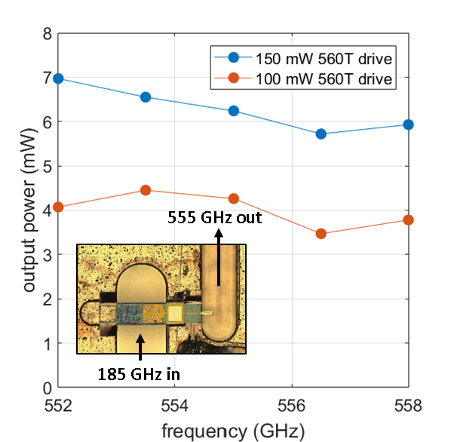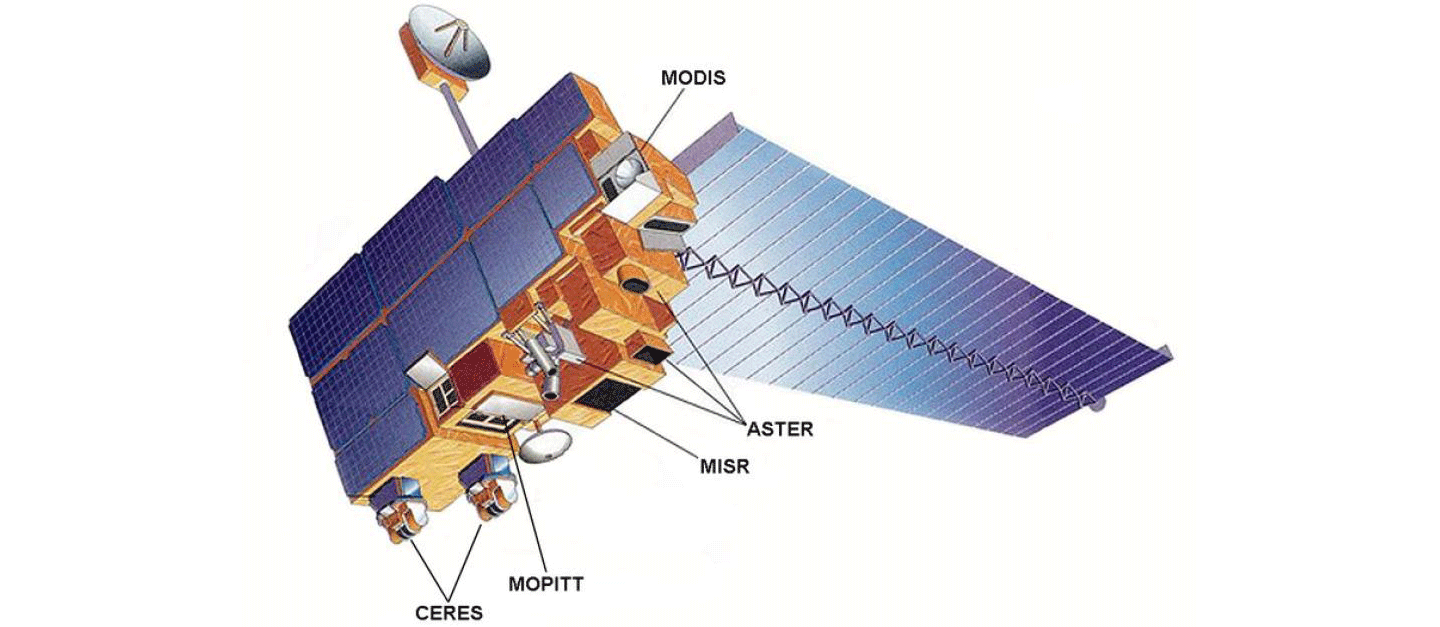PROJECT
Vapor Inside-cloud Profiling Radar (VIPR) and WAter Sounding Short-range Radar (WASSR)
SNAPSHOT
NASA researchers are exploring a new radar-based method to map water vapor both in Earth’s atmosphere and near the surface of Mars.
Mapping water vapor is a crosscutting theme of NASA science investigations across the solar system. Engineers and scientists at NASA’s Jet Propulsion Laboratory (JPL) are exploring a new radar-based remote sensing approach for measuring absolute humidity, both in Earth’s atmosphere from an aircraft and near the surface of Mars on a future rover platform. This technique relies on the frequency dependence of a radar beam’s propagation when tuned near one of the water molecule’s absorption resonances. The strongest of these resonances occur at extremely high frequencies, beyond the reach of traditional radar technology. Consequently, NASA JPL is developing novel hardware components and configurations to enable this emerging measurement concept.
Water vapor, a dominant greenhouse gas, plays a critical role in Earth’s atmosphere, especially through its influence on the growth and thermodynamics of clouds, which have a major effect on weather and climate models. One way these models could be improved is by measuring water vapor distributions inside of clouds with finer spatial resolution than current remote sensing approaches allow. Beyond Earth, planetary scientists also seek to understand the sources and cycles of water vapor, whether in cometary jets, plumes of icy moons such as Enceladus, clouds around the dwarf planet Ceres, or the atmosphere of Jupiter. On Mars, better knowledge about the distribution and diurnal cycles of trace atmospheric water vapor can improve our understanding of how that planet transitioned from a warm/wet environment in its ancient past to today’s extremely dry and cold conditions.
A team at JPL is currently exploring how differential absorption radar can be applied to the problem of water vapor remote sensing with high spatial resolution. In this technique, a radar beam probes some distant target while its frequency is tuned onto a water vapor absorption resonance. By measuring how the radar beam attenuates as its frequency changes, one may use water’s spectral properties to infer how much water vapor lies along the radar beam’s path.
In Earth’s atmosphere, a prominent water molecule resonance occurs at 183 GHz, several times higher than the frequency used in 5G communications. The corresponding wavelength of 1.6 mm is small enough that radar scattering from cloud particles can be measured. By comparing cloud reflectivity intensity changes over distance and frequency, range-resolved maps of absolute humidity inside of clouds can be obtained. This water vapor retrieval technique has recently been validated in ground and low-flying airborne testing of JPL’s VIPR (Vapor Inside-cloud Profiling Radar) instrument, developed with support from the NASA Earth Science Division’s Instrument Incubator Program (IIP). The success of VIPR has relied in part on the use of JPL’s unique and state-of-the-art semiconductor component technology, including power-combined millimeter-wave Schottky diode frequency-multipliers capable of transmitting hundreds of milliwatts of continuous power. Recently, the VIPR team was selected to deploy the radar from a high-flying aircraft under the Earth Science Division’s Airborne Instrument Technology Transition (AITT) Program.
Building on the same differential absorption radar approach as in VIPR, JPL is also developing the WAter Sounding Short-range Radar (WASSR) concept with the support from the NASA Planetary Science Division’s Maturation of Instruments for Solar System Exploration (MatISSE) Program. WASSR is being designed as a compact and low-power instrument suitable for use on a potential future Mars rover platform. WASSR will detect radar reflections from the local Martian terrain by scanning its beam up hillsides to detect vertical gradients in water vapor abundance, and scanning over ground patches that may affect near-surface humidity, such as the mysterious recurring slope lineae—dark streaks that appear seasonally on some Martian slopes.
In the cold, dry, and low-pressure atmosphere of Mars, the best water vapor resonance for differential absorption radar occurs near 557 GHz, well into the difficult-to-access submillimeter-wave (or terahertz) band. JPL and NASA are world leaders in the field of terahertz technology, which historically has been used in passive spectroscopic instrumentation to observe naturally emitted radiation in Earth, planetary, and astronomical contexts. The WASSR team is building the first active terahertz radar sensor that uses its own 557 GHz signal source to measure water vapor in a planetary environment such as Mars. Some technological advances of WASSR’s design, newly developed in the last year, include a transmitter capable of providing more than 6 mW of continuous power, a receiver sensitive enough to detect radar reflections from Martian terrain at distances of several kilometers, and a low-power-consumption millimeter-wave synthesizer-on-a-chip designed by collaborators at UCLA and fabricated at one of the same integrated circuit foundries used to produce chips used in modern cell phones.
This research was carried out at the Jet Propulsion Laboratory, California Institute of Technology, under a contract with the National Aeronautics and Space Administration (80NM0018D0004).
PROJECT LEAD
Dr. Ken Cooper, Jet Propulsion Laboratory, California Institute of Technology
SPONSORING ORGANIZATION
Earth Science Division’s Instrument Incubator Program (IIP) and Planetary Science Division’s Maturation of Instruments for Solar System Exploration (MatISSE) Program




























